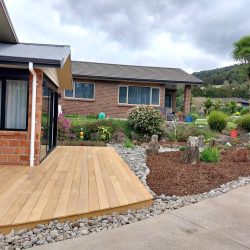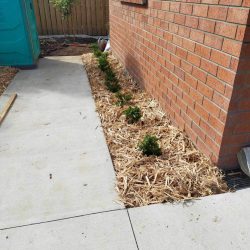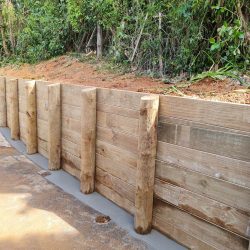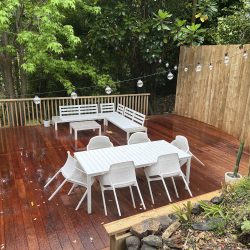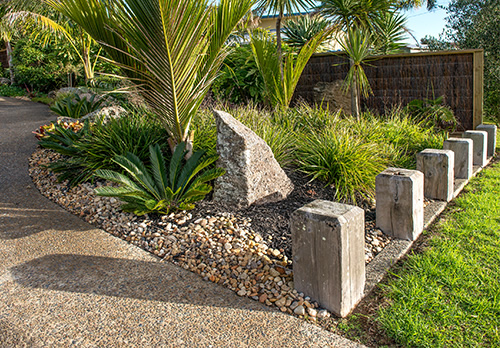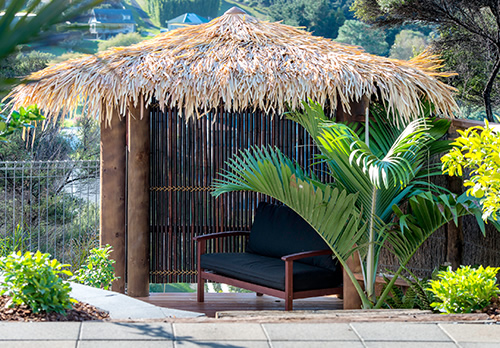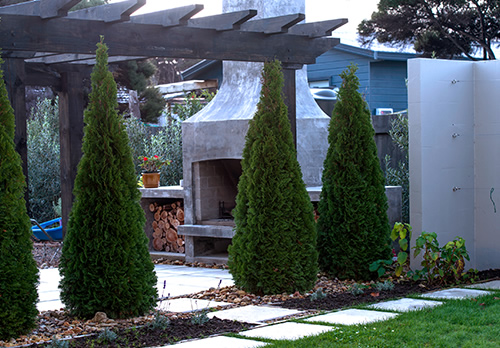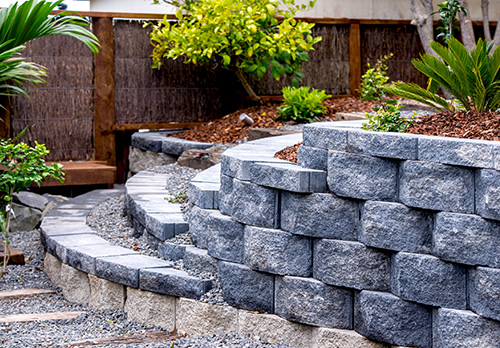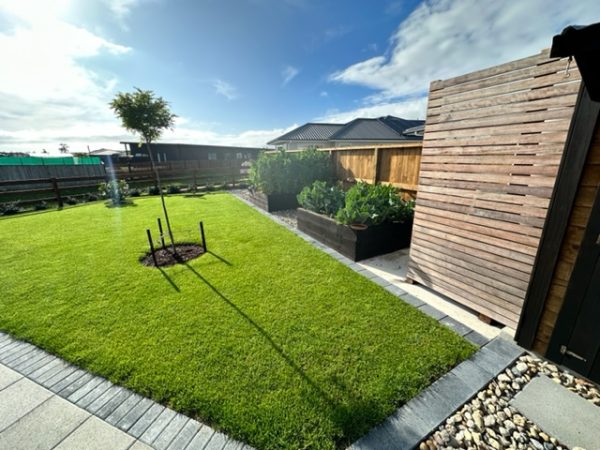 In many New Zealand suburbs, adapting to smaller garden spaces is becoming increasingly common. While urbanisation has its advantages, it often comes with the challenge of limited outdoor areas. However, a small footprint does not equate to limited potential. Compact gardens, with the right approach, can stand out as captivating green retreats that blend functionality with aesthetic appeal. This guide is designed to offer insights, tips, and inspiration for those looking to make the most of their garden spaces. For more bespoke solutions and hands-on expertise, exploring professional landscaping services can provide tailored results.
In many New Zealand suburbs, adapting to smaller garden spaces is becoming increasingly common. While urbanisation has its advantages, it often comes with the challenge of limited outdoor areas. However, a small footprint does not equate to limited potential. Compact gardens, with the right approach, can stand out as captivating green retreats that blend functionality with aesthetic appeal. This guide is designed to offer insights, tips, and inspiration for those looking to make the most of their garden spaces. For more bespoke solutions and hands-on expertise, exploring professional landscaping services can provide tailored results.
The Basics of Small Garden Design
Understanding Scale
When dealing with compact spaces, it’s essential to keep the scale in mind. Opting for smaller, well-proportioned garden elements ensures that the space doesn’t feel cluttered or overwhelming. This applies to everything from the choice of plants to garden furniture. For instance, miniature or dwarf plant varieties can provide the lush green look without taking over the entire garden.
Functional Zoning
Every square foot counts in a compact garden. Instead of trying to fit in every element, consider the primary purpose of your garden. Do you envision it as a tranquil relaxation zone or a vibrant entertainment space? By defining specific zones — be it for lounging, dining, or even a small kitchen garden patch — you can design with clarity and purpose.
Vertical Gardening
When ground space is at a premium, it’s time to think vertically. Walls, fences, and even the sides of buildings can become canvases for greenery. Vertical gardening not only maximises space but also adds depth and layers to the garden’s design. Consider installing green walls, trellises for climbing plants, or hanging planters to bring different levels of greenery to your compact space.
Effective Use of Color
In smaller gardens, the color palette can make a significant difference. Lighter hues tend to make a space feel larger, while bold, dark colors can create a sense of depth. Integrating plants with varied foliage and bloom colors can make the garden feel more spacious and dynamic.
Incorporating Mirrors
A well-placed mirror can create an illusion of space in compact garden settings. By reflecting light and greenery, mirrors can make gardens seem larger and more expansive than they actually are. Whether it’s a decorative wall mirror or mirrored garden ornaments, this design trick can be a game-changer for small spaces.
These principles lay the groundwork for any small garden project, offering a comprehensive approach to transforming compact spaces into green havens.
Celebrating New Zealand’s Native Flora in Compact Gardens
Advantages of Native Plants
Native plants aren’t just an emblem of Kiwi pride; they offer tangible benefits for gardeners. Acclimated to New Zealand’s specific climate and soil conditions, they often require less maintenance and water, making them eco-friendly choices. Native plants can also attract local wildlife like birds and beneficial insects, enhancing the garden’s biodiversity.
Compact Native Stars
New Zealand boasts an array of native plants that are well-suited for smaller gardens:
- Pimelea prostrata (New Zealand Daphne): This low-growing shrub flaunts beautiful white or pink flowers, making it a striking ground cover.
- Coprosma varieties: Known for their glossy, colourful leaves, Coprosma plants are versatile and can be sculpted as hedges or left to grow naturally.
- Hebe species: With diverse varieties ranging in size and color, Hebe plants can bring vibrant flowers and lush foliage to compact spaces.
Seasonal Changes with Native Plants
One of the joys of gardening is watching the seasonal transformations. Native plants, in particular, offer a distinct seasonal cycle. Whether it’s the flowering of Kōwhai in spring or the red and orange hues of Rata trees in summer, integrating native plants ensures your garden remains dynamic and ever-changing throughout the year.
Supporting Local Ecosystems
Beyond aesthetics, opting for native plants supports New Zealand’s unique ecosystems. By choosing local flora, gardeners can play a role in conserving the natural heritage and ensuring that the native fauna, which depends on these plants, thrives.
By integrating New Zealand’s native plants, compact gardens can not only be spaces of beauty but also ecological hubs that resonate with the spirit of Aotearoa.
Multi-Functional Garden Elements for Compact Spaces
Furniture with Dual Purposes
In smaller gardens, every piece of furniture should earn its keep. Benches with storage underneath can hide away garden tools or cushions when not in use. Foldable furniture, on the other hand, can be stashed away when space is needed for other activities.
Edible Landscaping
Merging the decorative with the delicious, edible landscaping is both practical and aesthetically pleasing. Plants like rosemary, thyme, and lavender serve dual purposes: they add beauty and fragrance, and they can be used in the kitchen. Similarly, compact fruit trees or berry bushes can provide both shade and fresh produce.
Rain Gardens
A fusion of functionality and environmental responsibility, rain gardens are designed to collect and filter runoff water. They can be both a beautiful garden feature and a solution to drainage problems in compact spaces. By selecting the right mix of water-loving plants, these gardens can thrive with minimal maintenance, all while playing a crucial role in water conservation.
Raised Garden Beds and Planters
Perfect for those with limited ground space or poor soil quality, raised beds and planters can be both decorative and functional. They provide clear demarcations for different plants, aid in better soil control, and can even serve as seating edges when designed accordingly.
Garden Screens and Partitions
Screens made of lattice or trellis, when adorned with climbing plants, can act as living walls. These structures not only offer privacy but also provide additional vertical gardening space, maximizing greenery without taking up floor real estate.
Incorporating multi-functional elements is a smart strategy for small gardens. It ensures that every inch serves a purpose, marrying form and function in harmonious tandem.
Elevating Design with Vertical Gardening
The Concept of Green Walls
One of the most profound ways to introduce greenery into tight spaces is through green walls or living walls. These structures allow plants to grow vertically, turning a plain wall into a lush tapestry of foliage and flowers. Equipped with a proper irrigation system, green walls can be low-maintenance and provide a striking visual element to any garden.
Harnessing the Power of Climbers and Creepers
Certain plants naturally tend to grow upwards, clinging onto surfaces. Plants like Clematis, Passionfruit, and the native New Zealand Rata vine can transform fences, trellises, and walls into green masterpieces. Choosing the right climbers can add depth, color, and even fragrance to small garden spaces.
Hanging Planters: The Floating Gardens
Suspended from above, hanging planters can be strategically placed at various heights to create a multi-layered garden in the air. These planters are perfect for ferns, succulents, and even certain flowering plants. When combined with ground-level plants, hanging planters offer a three-dimensional garden experience.
Utilizing Shelving and Racks
Simple garden shelves or racks can hold a multitude of potted plants, herbs, or succulents. Positioned against walls or fences, these structures provide an organized way to display plants vertically, allowing for easy access and maintenance.
Benefits of Vertical Gardening
Beyond space-saving, vertical gardens offer numerous benefits. They can act as natural insulators, cooling down surroundings during hotter months. They also aid in air purification, turning carbon dioxide into oxygen, and can act as sound barriers in noisy urban settings.
Vertical gardening reimagines the boundaries of traditional garden spaces. With a touch of creativity and the right selection of plants, even the smallest areas can be transformed into verdant sanctuaries reaching for the skies.
Compact Water Features: Small in Size, Big on Impact
Bowl Ponds
Bowl ponds or container water gardens are perfect for those wanting a water feature without committing to a large pond. They can host a variety of aquatic plants, and even small fish, creating a serene mini-ecosystem. Placed on a patio or nestled amidst plants, bowl ponds serve as a focal point and add a touch of tranquility.
Flowing Fountains
Nothing complements the sounds of nature like the soft trickling of water. Compact fountains, whether wall-mounted or standalone, can introduce movement and sound into a garden, offering a soothing ambiance. With solar-powered options available, installing a fountain can be both eco-friendly and hassle-free.
Reflections with Small Mirrored Pools
Mirrored pools, though small, can magnify the beauty of the garden by reflecting the sky, plants, and even surrounding architecture. These calm water surfaces also attract birds and beneficial insects, enhancing the garden’s ecosystem.
Waterfalls in Miniature
While large cascading waterfalls might be out of the question for compact spaces, their smaller counterparts can be just as mesmerizing. Using rocks and stones, a mini waterfall can be created, which not only offers visual appeal but also aerates the water, benefiting plants and aquatic life.
Maintenance Considerations
While water features bring numerous benefits, they require specific care to ensure longevity. Keeping the water clean, ensuring pumps are functional, and periodically checking for algae are vital steps. For those using bowl ponds, selecting the right aquatic plants can aid in natural filtration and balance.
Incorporating water features into a compact garden not only elevates its aesthetics but also introduces a dynamic element that appeals to multiple senses. Their presence resonates with the calming rhythms of nature, making even the smallest space feel like a peaceful haven.
Practical Tips for Maintenance in Compact Gardens
Regular Pruning
While smaller gardens might give the illusion of less maintenance, dense plantings can quickly become unruly. Regular pruning ensures that plants remain healthy, promotes better air circulation, and maintains the garden’s intended design aesthetics.
Soil Health
Compact spaces often mean plants are competing for nutrients. Regularly enriching the soil with compost and organic matter ensures plants get the nourishment they need. Additionally, periodic soil testing can help tailor fertilization practices.
Efficient Watering:
Even in limited spaces, water usage should be strategic. Drip irrigation systems or soaker hoses can provide a steady, efficient supply of water, ensuring that plants receive moisture without wastage. For pot plants, ensure proper drainage to prevent root rot.
Pest and Disease Monitoring
With plants in close proximity, pests and diseases can spread rapidly in compact gardens. Regularly inspect plants for early signs of infestation or disease. Opt for natural remedies or beneficial insects as a first line of defense to maintain an eco-friendly garden environment.
Choosing the Right Tools
In smaller spaces, bulky garden tools might not be practical. Investing in compact, multi-purpose tools can make maintenance tasks easier and more efficient.
Rotate Potted Plants
If you rely heavily on container gardening, periodically rotating your pots can ensure that plants receive uniform sunlight, promoting even growth.
Harvest Regularly
For gardens with edible plants, regular harvesting not only provides fresh produce but also encourages plants to produce more. Overripe fruits and veggies can also attract pests.
Stay Organized
Keep a garden journal or a digital log. Tracking plant growth, noting any challenges, and scheduling regular maintenance tasks can ensure that nothing gets overlooked.
Seasonal Care
Every season brings its set of gardening tasks. Whether it’s mulching in the summer to retain moisture, protecting plants from frost in winter, or aerating the soil in spring, being attuned to seasonal needs is key.
Maintaining a compact garden requires a blend of regular attention, understanding the unique needs of the space, and adapting practices to ensure plants thrive in their cozy environment. With these practical tips, gardeners can ensure their green space remains vibrant throughout the year.
Conclusion: The Charm of Compact Gardens
In the vast world of gardening, compact gardens hold a special place. They challenge our creativity, push the boundaries of traditional design, and yet offer an intimate connection with nature that larger spaces often can’t match. Through innovative design ideas, a celebration of New Zealand’s rich flora, and a dedication to regular maintenance, these diminutive spaces can be transformed into lush, vibrant sanctuaries.
Moreover, small gardens resonate with the current global trend of maximizing minimal spaces, reflecting a conscious move towards sustainable and eco-friendly living. Whether it’s a balcony in a bustling city or a small backyard in a suburban dwelling, every compact garden holds the potential to be a green haven.
To all the green thumbs embarking on the journey of creating or revamping a small garden space: remember, it’s not about the size of the garden, but the depth of the experience it offers. With the right approach, even the tiniest patch can become a source of immense joy, relaxation, and natural beauty.




